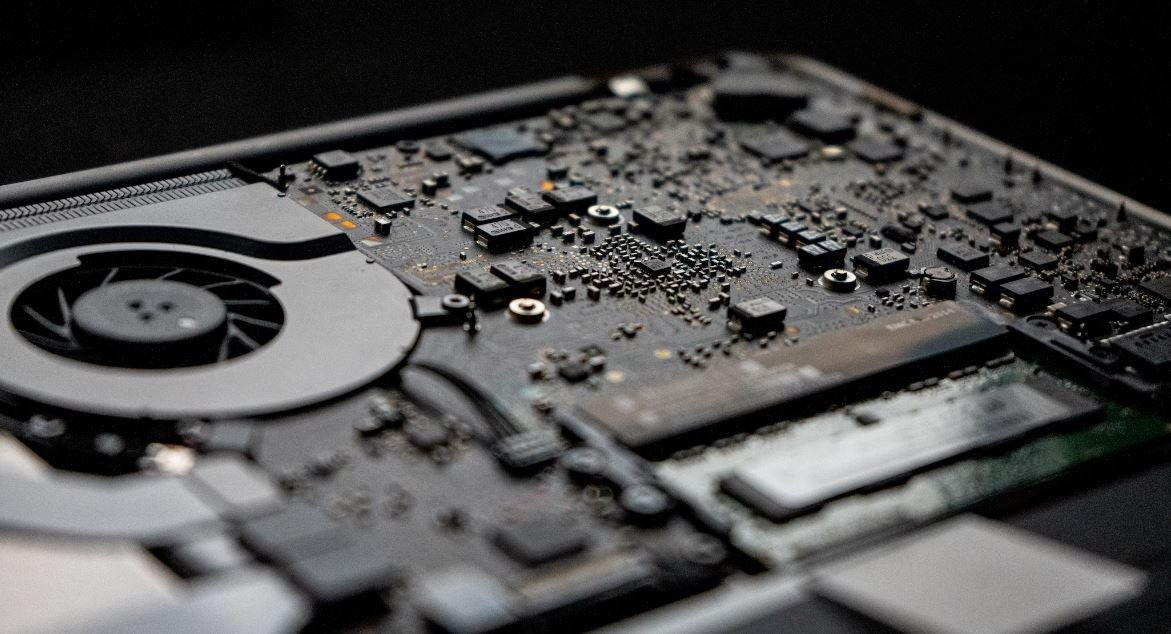Music Stand
A music stand is a must-have accessory for musicians of all levels. It provides a stable and convenient platform for holding sheet music, allowing the musician to read and play without the need to hold the sheets in their hands. Whether you’re a professional musician performing on stage or a beginner practicing at home, a music stand is an essential tool.
Key Takeaways
- A music stand is a necessary accessory for musicians.
- It provides a stable platform for holding sheet music.
- Music stands come in various sizes, materials, and designs.
- Collapsible music stands are portable and easy to store.
- Some music stands include additional features like adjustable height and light attachments.
Types of Music Stands
Music stands come in a variety of types, catering to different needs and preferences. The most common types include:
- Traditional music stands: These are the classic solid stands made of metal or wood, featuring a wide base and an adjustable music rest. They offer stability and durability.
- Wire music stands: Designed for portability, wire stands are lightweight and foldable, making them easy to carry around. They are commonly used by musicians on the go.
*Wire music stands are popular among street performers due to their portability.
- Paper holders: These are specialized music stands designed specifically for holding loose sheet music or songbooks. They often include clips or rings to keep the pages in place.
Choosing the Right Music Stand
When selecting a music stand, consider the following factors:
- Stability: Ensure the stand has a sturdy base and does not wobble when holding music sheets.
- Adjustability: Look for stands with adjustable height and angle to suit your playing position.
- Portability: If you need to travel with your music stand, consider a collapsible and lightweight option for easy transportation.
- Additional features: Some music stands offer added functionalities like light attachments for better visibility in dimly lit spaces.
Comparison Between Traditional and Wire Music Stands
| Traditional Music Stand | Wire Music Stand | |
|---|---|---|
| Material | Wood or metal | Lightweight metal or plastic |
| Portability | Less portable due to weight | Highly portable and foldable |
| Stability | More stable and durable | May be less stable and prone to wobbling |
How to Maintain a Music Stand
To ensure your music stand remains in good condition and functions optimally:
- Clean it regularly with a soft cloth to remove dust and debris.
- Avoid placing excessive weight on the music rest to prevent bending or damage.
- Store it in a safe and dry place when not in use to prevent rust or corrosion.
Modern Innovations in Music Stands
The evolution of music stands has led to the introduction of innovative features to enhance the musician’s experience:
- LED lights: Some music stands come with built-in LED lights that illuminate the sheet music, making it easier to read in low light environments.
- Tablet holders: With the rise of digital sheet music, music stands now include holders or attachments for tablets, allowing musicians to read digital scores and annotations.
*LED lights are especially useful for musicians performing in dimly lit venues such as theaters.
Conclusion
A music stand is an essential accessory for musicians to enhance their performance and practice. By providing a stable platform for holding sheet music, music stands ensure musicians can comfortably read and play without any distractions. With various designs and features available, finding the right music stand to meet your specific requirements is now easier than ever.

Common Misconceptions
Misconception 1: All musicians read sheet music
Contrary to popular belief, not all musicians rely on sheet music to play an instrument or compose music. While it is true that many musicians learn to read sheet music as part of their training, there are also countless musicians who have developed their skills through ear training, improvisation, and learning by imitation.
- Many self-taught musicians have never learned to read sheet music, yet have excelled in their musical careers.
- Some genres, such as jazz and blues, prioritize improvisation and require a different set of skills than reading sheet music.
- Even musicians who can read sheet music often use it as a starting point and then add their own interpretation and improvisation.
Misconception 2: Classical music is boring
Classical music has a reputation for being boring or uninteresting to modern listeners. However, this misconception fails to acknowledge the immense depth, complexity, and beauty of classical compositions. While it may require a certain level of patience and attention to fully appreciate classical music, those who take the time to explore the genre often discover its profound emotional impact.
- Classical music spans centuries of human creativity and covers a wide array of styles and moods.
- By understanding the historical context and the compositional techniques, classical music becomes a fascinating journey through different eras.
- Many contemporary musicians and composers draw inspiration from classical music, incorporating its elements into their own works.
Misconception 3: Playing a musical instrument is easy
While some people may think that playing a musical instrument is easy, it is important to recognize the amount of time, dedication, and practice required to master an instrument. Learning to play an instrument involves developing physical coordination, memorizing music theory, and training one’s ear – all of which can be challenging and require a significant time investment.
- Mastering an instrument often takes years of consistent practice and dedication.
- Playing an instrument also requires mental agility and concentration, as musicians must simultaneously read sheet music, interpret musical symbols, and coordinate their physical movements.
- Even professional musicians continue to practice daily to maintain and improve their skills.
Misconception 4: Talent is all you need to succeed in music
While talent certainly plays a role in musical success, it is not the sole determining factor. Many talented individuals fail to reach their full potential due to a lack of discipline, perseverance, and practical skills. Success in music often requires a combination of talent, hard work, and a willingness to adapt and learn.
- Developing skills such as sight-reading, music theory, and improvisation requires consistent practice and dedication.
- Musicians also need interpersonal skills to collaborate effectively with others and navigate the music industry.
- Successful musicians often have a solid understanding of marketing, networking, and self-promotion to create opportunities for themselves.
Misconception 5: Music is only for the young
Another common misconception is that music is exclusively for the young, and older individuals cannot learn or enjoy playing an instrument. However, numerous studies have demonstrated that the brain remains capable of learning and adapting throughout a person’s life, suggesting that it is never too late to start playing music.
- Adults can benefit from learning an instrument, as it helps improve cognitive abilities and memory.
- Musical activities provide a creative outlet and can help reduce stress and promote mental well-being for people of all ages.
- Many successful musicians began their musical journeys later in life, illustrating that age is not a barrier to pursuing a passion for music.

Comparing Popularity of Different Music Genres
In recent years, the music industry has witnessed a growing diversity of genres. This table compares the popularity of various music genres based on streaming data from a leading online music platform:
| Genre | Daily Streams (Millions) |
|---|---|
| Pop | 250 |
| Rap | 120 |
| Rock | 90 |
| Country | 60 |
| R&B | 55 |
Top Selling Albums of All Time
Album sales have always been a significant indicator of an artist’s success. Here is a list of the top five best-selling albums worldwide:
| Artist | Album | Copies Sold (Millions) |
|---|---|---|
| Michael Jackson | Thriller | 66 |
| AC/DC | Back in Black | 50 |
| Pink Floyd | The Dark Side of the Moon | 45 |
| Whitney Houston | The Bodyguard Soundtrack | 42 |
| The Eagles | Their Greatest Hits (1971–1975) | 42 |
Global Music Revenue by Format
The way we consume music has evolved over the years. This table presents the percentage breakdown of global music revenue by format:
| Format | Revenue Percentage |
|---|---|
| Streaming | 62% |
| Physical (CDs, Vinyl) | 23% |
| Downloads (Digital) | 14% |
| Other | 1% |
Highest-Grossing World Music Tours
The live music experience remains a fundamental aspect of the industry. Here are the top five highest-grossing world music tours of all time:
| Artist | Tour Name | Gross Revenue (Billions) |
|---|---|---|
| U2 | 360° Tour | 736 |
| Ed Sheeran | ÷ Tour | 775 |
| Coldplay | A Head Full of Dreams Tour | 523 |
| Guns N’ Roses | Not in This Lifetime… Tour | 584 |
| The Rolling Stones | A Bigger Bang Tour | 558 |
Grammy Award Distribution by Genre
The prestigious Grammy Awards recognize exceptional musical accomplishments. This table displays the distribution of Grammy Awards by genre:
| Genre | Number of Grammy Awards |
|---|---|
| Pop | 43 |
| Rap | 26 |
| Rock | 35 |
| Country | 15 |
| R&B | 19 |
Top Female Artists of All Time
Throughout music history, numerous talented female artists have made an indelible impact. The following table showcases the top five female artists of all time based on album sales:
| Artist | Total Album Sales (Millions) |
|---|---|
| Madonna | 300 |
| Rihanna | 250 |
| Céline Dion | 200 |
| Whitney Houston | 170 |
| Beyoncé | 160 |
Most Streamed Songs of All Time
Streaming services have revolutionized the way we access music. Here is a list of the five most streamed songs of all time:
| Song | Artist | Streams (Billions) |
|---|---|---|
| Shape of You | Ed Sheeran | 2.9 |
| Despacito | Luis Fonsi ft. Daddy Yankee | 2.8 |
| Blinding Lights | The Weeknd | 2.3 |
| Rockstar | Post Malone ft. 21 Savage | 2.2 |
| Dance Monkey | Tones and I | 2.0 |
Artists with the Most Number One Hits
Achieving a number one hit is a coveted accomplishment for any artist. The table below lists the top five artists with the most number one hits:
| Artist | Number of Number One Hits |
|---|---|
| The Beatles | 20 |
| Elvis Presley | 18 |
| Madonna | 12 |
| Rihanna | 14 |
| Michael Jackson | 13 |
Music Industry Revenue by Region
The music industry generates revenue from various regions around the world. Here is a breakdown of global revenue by region:
| Region | Revenue (Billions) |
|---|---|
| North America | 12.1 |
| Europe | 10.8 |
| Asia | 9.4 |
| Latin America | 1.4 |
| Africa | 0.8 |
The music industry continues to evolve, driven by changing listening habits, technological advancements, and global phenomena. From the popularity of streaming to legendary albums and record-breaking tours, music remains a powerful force uniting people worldwide. The diverse genres, noteworthy achievements, and transformative impact showcased in these tables exemplify the vibrant and dynamic nature of the ever-evolving music landscape.
Frequently Asked Questions
What is a music stand?
A music stand is a device used by musicians to hold sheet music, musical scores, or other documents while they are performing or practicing. It typically consists of a stand with an adjustable height, a tray for holding the music, and sometimes additional features like clips or pegs to secure the sheets in place.
Why do I need a music stand?
A music stand is essential for musicians as it provides a stable and easily accessible surface for holding sheet music or songbooks during rehearsals, performances, or practice sessions. It helps musicians maintain proper body posture and eye level, ensuring better focus, control, and readability of the music.
What are the different types of music stands available?
The main types of music stands available are:
- Traditional tripod-style stands
- Wire stands
- Orchestra-style stands
- Compact folding stands
- Desktop stands
- Conductor stands
- Laptop or tablet stands for digital sheet music
How do I choose the right music stand for my needs?
When choosing a music stand, consider the following factors:
- Sturdiness and stability
- Adjustability in height and angle
- Portability and ease of transport
- Material (metal, plastic, wood)
- Tray size and capacity to hold music sheets
- Add-ons or accessories like clips or pegs
- Budget
How do I properly set up a music stand?
To set up a music stand, follow these steps:
- Extend the tripod legs and lock them in place
- Adjust the height of the stand to a comfortable level
- Lock the height adjustment mechanism
- Open the music tray or attach it securely
- Ensure the tray is level and secure
- Place your sheet music on the tray, making sure it doesn’t slip or slide
Can I use a music stand for other purposes?
While music stands are primarily designed for holding sheet music, they can also be used for various other purposes such as holding books, tablets, laptops, speeches, presentations, and even artwork. However, it is important to ensure that the stand is suitable for the intended purpose and can securely accommodate the items you wish to place on it.
How do I maintain and clean my music stand?
To maintain and clean your music stand, follow these guidelines:
- Regularly wipe down the stand with a soft cloth or damp sponge to remove dust and dirt
- For metal stands, you can use a mild detergent mixed with water to remove any stubborn stains
- Avoid using abrasive cleaners or solvents as they may damage the surface
- Keep the adjustable mechanisms lubricated, if necessary, following the manufacturer’s instructions
- Store the stand in a safe and dry place when not in use to prevent rust or damage
How can I prevent my sheet music from falling off the stand?
To prevent sheet music from falling off the stand, you can:
- Use metal or plastic sheet music clips to secure the corners of the sheets
- Attach elastic bands or bungee cords to hold the music in place
- Ensure the music stand tray is properly adjusted and level to prevent slippage
- Place a small weight or object on the bottom edge of the sheets
Are there any alternatives to traditional music stands?
Yes, there are several alternatives to traditional music stands, including:
- Music stands that attach to microphone stands
- Tablet or smartphone holders for digital sheet music
- Portable music stands that can be mounted on walls or chairs
- Foldable or roll-up paper music stands




